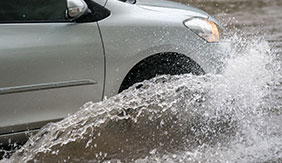Floods

When dealing with external flood threats, pre-planning can offer several benefits in reducing potential damage to the building and limit the amount of time (and money) needed to recover from extensive flood events. While floods may occur with little to no warning, there are steps that can be taken to minimize the damage when you do receive flood warnings. First and foremost is ensuring that all occupants know how to safely evacuate the building, or when evacuation is not possible, know where within the building to safely await assistance. Once the occupants’ safety is addressed it is time to focus on limiting damage to the building. Begin with relocating building contents to floor levels that are above the anticipated flood levels, de-energizing electrical equipment serving portions of the building that may become flooded to reduce shock-hazard, protecting points of entry with sand bags or other methods of limiting water intrusion, and preparing pumps and hoses to extract the water.